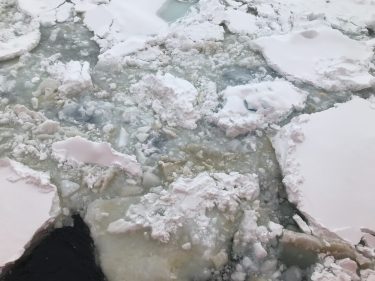
In the frigid waters surrounding Antarctica, an unusual seasonal cycle occurs. During winter, from March to October, the sun barely rises. As seawater freezes it rejects salts, creating pockets of extra-salty brine where microbes live in winter. In summer, the sea ice melts under constant daylight, producing warmer, fresher water at the surface.
This remote ecosystem is home to much of the Southern Ocean’s photosynthetic life. A new University of Washington study provides the first measurements of how sea-ice algae and other single-celled life adjust to these seasonal rhythms, offering clues to what might happen as this environment shifts under climate change.
The study, published Sept. 15 in the International Society for Microbial Ecology’s ISME Journal, contains some of the first measurements of how sea-ice microbes respond to changing conditions.
“We know very little about how sea-ice microbes respond to changes in salinity and temperature,” said lead author Hannah Dawson, a UW postdoctoral researcher who did the work while pursuing her doctorate in oceanography at the UW. “And until now we knew almost nothing about the molecules they produce and use in chemical reactions to stay alive, which are important for supporting higher organisms in the ecosystem as well as for climate impacts, like carbon storage and cloud formation.”
The polar oceans play an important role in global ocean currents and in supporting marine ecosystems. Microbes form the base of the food web, supporting larger life forms.
“Polar oceans make up a significant portion of the world’s oceans, and these are very productive waters,” said senior author Jodi Young, a UW assistant professor of oceanography. “These waters support big swarms of krill, the whales that come to feed on those krill, and either polar bears or penguins. And the start of that whole ecosystem are these single-celled microscopic algae. We just know so little about them.”
Read more at UW News »
